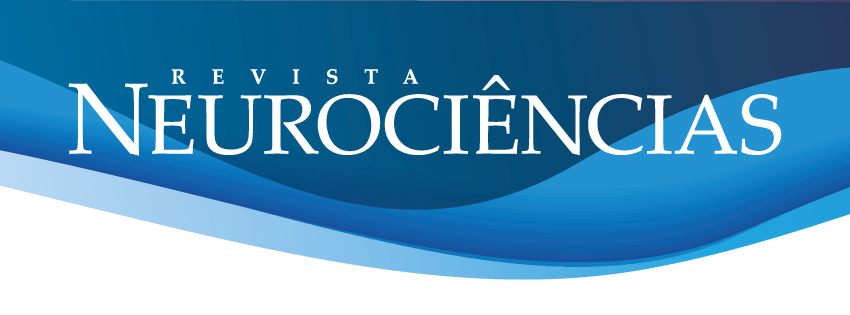“Androides sonham com ovelhas elétricas”? Leituras neurobioéticas de Westworld – 1ª Temporada
DOI:
https://doi.org/10.34024/rnc.2022.v30.11703Palavras-chave:
consciência, inteligência artificial, filosofia da mente, westworld, neurobioéticaResumo
Introdução. O debate dirigido às questões relativas (1) à criação de robôs androides (2) dotados de inteligência artificial (IA) e que (3) poderão estabelecer relação com seres humanos tem alcançado grande relevância no campo bioético, técnico-científico e cinematográfico. Este é precisamente o universo descrito na série Westworld, as quais abrem caminho para reflexões acerca de uma neuro(bio)ética, termo que abrange conceitos da neurociência, da biotecnociência e da filosofia moral. Objetivo. apresentar e discutir questões sobre a neuro(bio)ética relacionadas à consciência aplicada aos entes artificiais e aos seres-humanos, utilizando como subsídio a primeira temporada da série Westworld. Resultados. No decorrer dos episódios, a série estimula o debate sobre até que ponto se pode estender ou limitar as fronteiras entre arte e a ciência. Também almeja-se discutir e apresentar a imbricada integração do sistema nervoso humano na construção dos processos consciência, assim como as interseções entre a consciência e a tecnologia, através da IA e da robótica. Conclusões. As atuais perspectivas de evolução da robótica e da IA demandam robusta reflexão ética, a qual tem como pano de fundo a questão kantiana "O que é o homem?". Diante disso, é de grande proficuidade entender o que se deseja da tecnologia e os porquês de tal desejo.
Métricas
Referências
Lawrence DR, Palacios-González C, Harris J. Artificial Intelligence. The Shylock Syndrome. Camb Q Healthc Ethics 2016;25:250-61. http://dx.doi.org/10.1017/S0963180115000559
Pugh J. Autonomy, Rationality, and Contemporary Bioethics. Oxford: Oxford University Press; 2020. http://dx.doi.org/10.1093/oso/9780198858584.001.0001
Esperidião-Antonio V, Majeski-Colombo M, Toledo-Monteverde D, Moraes-Martins G, Fernandes JJ, Assis MB, et al. Neurobiologia das emoções. Rev Psiquiatr Clín 2008;35:55-65. http://dx.doi.org/10.1590/S0101-60832008000200003
Adams B, Petruccione F. Quantum effects in the brain: A review. AVS Quantum Sci 2020;2:022901. http://dx.doi.org/10.1116/1.5135170
Damasio A. O mistério da consciência. São Paulo: Companhia das Letras; 2015.
Volkova PS. Harmonization of Consciousness: To the Question of Art Therapy. Media Music J 2017;8. http://mediamusicjournal.com/Issues/8_3.html
Carvalho-Nascimento EC, Silva E, Siqueira-Batista R. The "Use" of Sex Robots: A Bioethical Issue. ABR 2018;10:231-40. http://dx.doi.org/10.1007/s41649-018-0061-0
Tourinho CDC. A Filosofia da Mente Hoje. In: Esperidião V, Siqueira-Batista R (Org.). Neurociências: diálogos e interseções. Rio de Janeiro: Editora RUBIO, 2012, p.530-45.
Churchland P. Neurophilosophy: Toward a Unified Science of the Mind/Brain. Cambridge: The MIT Press; 1986.
Fabbro F, Cantone D, Feruglio S, Crescentini C. Origin and evolution of human consciousness. Prog Brain Res 2019;317-43. http://dx.doi.org/10.1016/bs.pbr.2019.03.031
Chalmers D. The Hard Problem of Consciousness. In: Schneider S, Velmans M (eds). The Blackwell Companion to Consciousness. New Jersey: John Wiley & Sons; 2017; p.32-42. http://dx.doi.org/10.1002/9781119132363.ch3
Bayne T, Hohwy J, Owen AM. Are There Levels of Consciousness? Trends Cogn Sci 2016;20:405-13. http://dx.doi.org/10.1016/j.tics.2016.03.009
Robles del Olmo B, García-Collado D. Retos éticos del hallazgo de consciencia encubierta con neuroimagen en estados vegetativos. Med Clín 2016;146:218-22.
http://dx.doi.org/10.1016/j.medcli.2015.07.011
Fazekas P, Overgaard M. Perceptual consciousness and cognitive access: an introduction. Phil Trans R Soc B 2018;373:20170340. http://dx.doi.org/10.1098/rstb.2017.0340
Frith CD. The neural basis of consciousness. Psychol Med 2019;51:1-13. http://dx.doi.org/10.1017/S0033291719002204
Kandel ER, Schwartz JH, Jessell TM. Princípios de Neurociências. O sistema somatossensorial: receptores e vias centrais. São Paulo: Editora AMGH; 2014.
Augustine JR. Chapter 9: The Reticular Formation. In: Human Neuroanatomy. 2nd ed. New Jersey: John Wiley & Sons. 2016; p.141-53.
Koch C, Massimini M, Boly M, Tononi G. Neural correlates of consciousness: progress and problems. Nat Rev Neurosci 2016;17:307-21. http://dx.doi.org/10.1038/nrn.2016.22
Whitney E, Alastra AJ. Neuroanatomy, Decerebrate Rigidity. Treasure Island: StatPearls Publishing; 2020. https://pubmed.ncbi.nlm.nih.gov/31613467/
Iwaczuk W, Guniczak P. Neurophysiological foundations of sleep, arousal, awareness and consciousness phenomena. Part 1. Anaesthesiol Intensive Ther 2015;47:162-7. http://dx.doi.5603/AIT.2015.0015
Owen AM. The Search for Consciousness. Neuron 2019;102:526-8. http://dx.doi.org/10.1016/j.neuron.2019.03.024
Waugh NC, Norman DA. Primary memory. Psychol Rev 1965;72:89-104. http://dx.doi.org/10.1037/h0021797
Lent R. Cem Bilhões de Neurônios. São Paulo: Atheneu; 2010.
Torrico TJ, Abdijadid S. Neuroanatomy, Limbic System. Treasure Island: StatPearls Publishing; 2020.
https://www.ncbi.nlm.nih.gov/books/NBK538491
RajMohan V, Mohandas E. The limbic system. Indian J Psychiatr 2007;49:132. http://dx.doi.org/10.4103/0019-5545.33264
Catani M, Dell'Acqua F, Thiebaut de Schotten M. A revised limbic system model for memory, emotion and behaviour. Neurosci Biobehav Rev 2013;37:1724-37.
http://dx.doi.org/10.1016/j.neubiorev.2013.07.001
Sousa A. Towards an integrative theory of consciousness: Part 1 (Neurobiological and cognitive models). Mens Sana Monogr 2013;11:100. http://dx.doi.org/10.4103/0973-1229.109335
Penrose R. The Emperor's New Mind - Concerning Computers, Minds and the Laws of Physics. New York: Penguin; 1991.
Hildt E. Artificial Intelligence: Does Consciousness Matter? Front Psychol 2019;10:1535. http://dx.doi.org/10.3389/fpsyg.2019.01535
Silver D, Huang A, Maddison CJ, Guez A, Sifre L, van den Driessche G, et al. Mastering the game of Go with deep neural networks and tree search. Nature 2016;529:484-9.
http://dx.doi.org/10.1038/nature16961
Scerri M, Grech V. Artificial intelligence in medicine. Early Human Development 2020;145:105017.
http://dx.doi.org/10.1016/j.earlhumdev.2020.105017
Klein E. Neuromodulation ethics: Preparing for brain-computer interface medicine. In: Illes J. Neuroethics: anticipating the future. Oxford: Oxford Scholarship Online. Oxford University Press; 2017. http://dx.doi.org/10.1093/oso/9780198786832.003.0007
Wolpaw J, Wolpaw EW. Brain-Computer Interfaces. Principles and Practice. Oxford: Oxford University Press; 2012. http://dx.doi.org/10.1093/acprof:oso/9780195388855.001.0001
Churchland P, Churchland PS. Could a Machine Think? Sci Am 1990;262:32-9. https://www.jstor.org/stable/24996642
Shapshak Paul. Artificial Intelligence and brain. Bioinform 2018;14:38-41. http://dx.doi.org/10.6026/97320630014038
Spatola N, Urbanska K. Conscious machines: Robot rights. Science 2018;359:400. http://dx.doi.org/10.1126/science.aar5059
Downloads
Publicado
Edição
Seção
Licença
Copyright (c) 2022 Flavio Marques Andreon, Elen Nas, Vanderson Esperidião Antônio, Eugênio Silva, Romario Brunes Will, Igor Rodrigues Mendes, Mathias Viana Vicari, Lindisley Ferreira Gomides

Este trabalho está licenciado sob uma licença Creative Commons Attribution 4.0 International License.
Como Citar
Aprovado 2022-02-17
Publicado 2022-03-15


